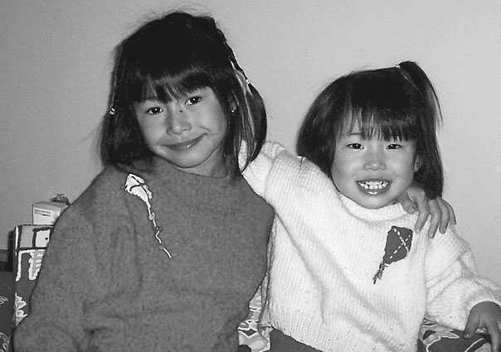The No Cry Discipline Solution (51 page)
Read The No Cry Discipline Solution Online
Authors: Elizabeth Pantley


See also: Dawdling; Doesn’t Come When Called
My child dawdles and fusses when I drop her off at
day care. You’d think she doesn’t want to be there. I
know she loves it because she repeats the behavior
when I pick her up in the afternoon—she doesn’t want
to leave!
Think About It
Some children have a diffi cult time adjusting to changes. They
like things to fl ow in a predictable way. Anything that upsets their
current activity is cause for alarm. These children require a bit
more thought to help them maneuver the changes they encounter
during their day.
What to Do
• Create very specifi c routines.
Consistency can help your
child be more comfortable.
Very specifi c
means that you do and
say the same things every time you drop her off and pick her up.
For example, park in the same area, enter through the same door,
approach the cubby, hang up the coat, check the job chart and
comment on the day’s assignment, give two hugs and two kisses,
and say, “See ya later, alligator!”
220
Copyright © 2007 by Better Beginnings, Inc. Click here for terms of use.
Day Care or Preschool, Dropping Off and Picking Up
221
• Let your child know when you will return each day.
It’s
comforting for a child to know that you will be there at a certain
time. Tie in your arrival with a specifi c activity, such as after snack
time, and let your child know when to expect you.
• Schedule an adjustment period.
When you drop off your
child and again when you pick her up, allow a fi ve-minute adjust-
ment period. (The time is worth it, as you’ll save at least fi fteen
minutes of fussing!) When you arrive at the day-care center, allow
your child to play or show you something for fi ve minutes. When
it’s time to leave, use a fun indicator, such as a tickle on the neck.
Or, hold up your key ring and have it tell your child (in a funny
voice) that the car is waiting and ready to go.
• Have a fun routine for the drive home.
Leave a snack bag
on your child’s seat with different contents every day, such as gra-
ham crackers, dry cereal, pretzels, or fruit. Play a certain game in
the parking lot as you walk to the car, such as counting all the red
cars you see or counting your steps. Mention something that your
child can look forward to at home, such as reading the new library
books or Grandpa coming for dinner.
What Not to Do
• Don’t cater to the complaints.
If you try too hard to con-
vince her that everything is okay, you may just make her nervous.
Instead, stay lighthearted and have confi dence that everything will
be fi ne. Most children stop crying within fi ve minutes of a parent’s
departure. Ask your day-care provider if this is true for your child.
If you like, call the center when you get to work or arrive at home
so they can reassure you that your child has fi nished crying and is
playing happily.
• Don’t get mad.
Your anger will just make your child fuss and
cry even more, and it won’t solve a thing. Moreover, it’s also a very
unpleasant way to start the day (for both of you).


See also: Dawdling
Even if I call my child four or fi ve times, he still won’t
respond to me. It’s like he’s wearing earplugs! If I want
him to come at all I usually have to go get him.
Think About It
Your child has learned exactly what you’ve taught him—that he
doesn’t have to heed your calls. He knows that if you really do
want him—you’ll come and get him.
What to Do
• Call. Wait. Act.
Follow this procedure: Visually locate your
child. Call once. Wait three minutes. Go to your child, take him
by the hand, and say, “When I call, I would like you to come.”
Then lead him to the desired location. If you do this consistently,
he will know that you really do expect him to come when called.
• Watch how the adults in your family act.
Does the caller
yell from two rooms away? Does the callee mumble, “In a minute,”
and then have to be reminded several times before responding?
These are the models for your child’s behavior. Change the ways
you respond to each other, and model the behavior that you want
of your child.
• Give a warning.
Making a transition from one activity to
another can be diffi cult for children. Instead of calling, “Come
222
Copyright © 2007 by Better Beginnings, Inc. Click here for terms of use.
Doesn't Come When Called
223
now!” try giving two warnings fi rst. “You’ll need to come in fi ve
minutes.” A few minutes later, say, “Two minutes.” Then, “Please
come in now.” At this point, wait a minute. If he doesn’t respond,
go to him and take him by the hand saying, “When I call I would
like you to come.”
• Acknowledge your child’s desires.
Let him know that you
understand he wants to continue playing, and then follow with a
statement and an action that promotes compliance, such as “I bet
you wish you could stay in the pool forever, but it’s time to go now.
Here’s your towel.”
• Use a dinner bell or timer to call your child.
Tell him that
when he hears the bell, he needs to come before you count to fi fty.
This is a fun and specifi c indicator. If you have more than one
child, you can let the fi rst one to respond to your call ring the bell
a second time.
• Check his hearing.
Make sure that your child has had a
hearing test and that his failure to respond isn’t because of a hear-
ing problem.
What Not to Do
• Don’t call to your child from more than twenty feet away.
The farther you are from your child, the more likely he’ll ignore
your calls.
• Don’t call your child until you’re
really
ready for him to
come.
If you summon your child but then get involved in something else, you are reinforcing that your call is only a warning that
you’ll need him sometime soon.


See also: Biting, Child to Adult
When my child is angry, he sometimes shoves or hits
me. I’ve tried to explain to him that he shouldn’t, but
he keeps doing it.
Think About It
Children typically hit because they are frustrated, don’t get their
way, and can’t get their point across. However, hitting an adult is
a serious offense and should be treated as such. It must be nipped
in the bud. This is as much about establishing control in the rela-
tionship as it is about teaching how to handle emotions and how
to show respect for other human beings.
What to Do
• Respond naturally.
Many children are unaware of how other
people feel or how their actions affect others. It is through experi-
ence that they learn best. If your child hits you, respond with an
“Ouch! That hurts!” Then explain that it isn’t the way to get your
attention, saying, “Use your words to tell me what you want.”
• Respond instantly.
Every time your child hits you, immedi-
ately take him gently by the hands, look him in the eye, and say
in a fi rm, no-nonsense voice, “No hitting! Time-out.” Guide the
child to a chair or other time-out place and announce, “Stay here.”
224
Copyright © 2007 by Better Beginnings, Inc. Click here for terms of use.

Hitting a Parent
225
Madeline, age 6, and Isabella, age 3
